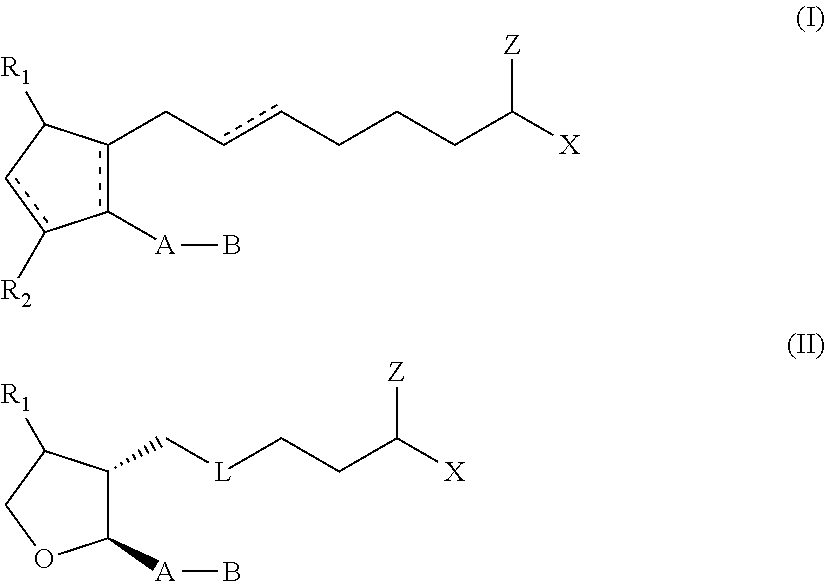Topical dosage regimen
a topical and dosage regimen technology, applied in the direction of aerosol delivery, drug composition, sense disorder, etc., can solve the problems of skin surface exposure for well over 12 hours, reduced self-esteem, psychosocial distress, etc., to improve patient comfort and convenience, reduce exposure, reduce the effect of subcutaneous fat and/or dermis exposur
- Summary
- Abstract
- Description
- Claims
- Application Information
AI Technical Summary
Benefits of technology
Problems solved by technology
Method used
Image
Examples
example 1
[0474]The following example describes a single-dose tissue pharmacokinetic experiment of topical latanoprost in minipigs. A composition comprising 0.8% latanoprost by weight was applied at different time points, each time to a separate but comparable application area on the back of an adult minipig. Twenty-four hours after the first dose, the animal was sacrificed and the skin was washed. Samples of skin, subcutaneous fat, and muscle were dissected en bloc from each application area and flash-frozen. Resulting fat samples were surface-washed with methanol, weighed, pulverized, resuspended, and homogenized. The content of latanoprost free acid (LFA, the active metabolite of latanoprost) in each sample was determined by an LC / MS / MS assay. The results are shown in Table 1.
[0475]
TABLE 1TimeLFA concentration since dosein subcutaneous fatComposition(h)(nanomolar)Latanoprost 0.8% in DMSO1152738823247
[0476]Thus, in an animal model with skin and subcutaneous fat similar to those of a human, ...
example 2
[0477]Skin permeation studies were conducted with compositions of latanoprost, ex vivo, on fresh human skin. Skin was obtained from live donors undergoing abdominoplasty and mounted on a standard (Franz-type) diffusion cell apparatus. All test articles contained 0.8% latanoprost (by weight) and were applied uniformly to a skin surface of 0.8 cm2. Each study was replicated on skin from at least two different donors. Treated skin was left open to the atmosphere to simulate clinical conditions. Receptor fluid flowed continuously over 24 hours and was collected in fractions. The amount of active drug metabolite (LFA) in these fractions was determined by Liquid Chromatography / Tandem Mass Spectrometry (LC / MS / MS). Table 2 shows the relative amounts of LFA delivered at different time intervals for each formulation, i.e. the percentage of 24-hour flux that occurred in each time interval. [Ethanol formulation 1 consisted essentially of 27% propylene glycol and 3% oleic acid in a base of about...
example 3
[0480]Skin permeation studies were conducted with a petroleum jelly composition of latanoprost, ex vivo, on fresh pig skin. The composition consisted essentially of 0.3% latanoprost, 5% isopropyl myristate, and 95% petroleum jelly. Skin was mounted on a standard (Franz-type) diffusion cell apparatus. All test articles were applied uniformly to a skin surface of 0.8 cm2. Each study was replicated on skin from at least two different donors. Treated skin was left open to the atmosphere to simulate clinical conditions. After 1, 2, 4 or 8 hours, the test articles were removed by wiping with a swab soaked in a soap-and-water solution, followed by wiping with a dry swab. After 24 hours, samples were removed from the diffusion cells, and the dermis was isolated. The amount of active drug metabolite (LFA) in each dermis samples was determined by Liquid Chromatography / Tandem Mass Spectrometry (LC / MS / MS). Table 3 shows the results of this experiment.
[0481]
TABLE 3Total drug (latanoprost plusTim...
PUM
| Property | Measurement | Unit |
|---|---|---|
| melting point | aaaaa | aaaaa |
| melting point | aaaaa | aaaaa |
| melting point | aaaaa | aaaaa |
Abstract
Description
Claims
Application Information
 Login to View More
Login to View More - R&D
- Intellectual Property
- Life Sciences
- Materials
- Tech Scout
- Unparalleled Data Quality
- Higher Quality Content
- 60% Fewer Hallucinations
Browse by: Latest US Patents, China's latest patents, Technical Efficacy Thesaurus, Application Domain, Technology Topic, Popular Technical Reports.
© 2025 PatSnap. All rights reserved.Legal|Privacy policy|Modern Slavery Act Transparency Statement|Sitemap|About US| Contact US: help@patsnap.com



